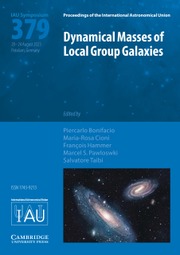Article contents
X-ray fluorescence modelling for Solar system regoliths: Effects of viewing geometry, particle size, and surface roughness
Published online by Cambridge University Press: 01 August 2006
Abstract
Soft X-ray fluorescent emission from the surfaces of asteroids and other atmosphereless solar-system objects is studied using ray-tracing techniques. X-ray observations allow the assessment of the elemental composition and structure of the surface. The model regolith is assumed to consist of close-packed uniformly distributed spherical particles of equal size. The surface is also assumed to be rough according to a fractional-Brownian-motion model. The fluorescent X-ray emission from regolith surfaces is simulated in order to better understand the contribution of viewing-geometry -related phenomena on the signal obtained from, e.g., orbiting platforms. The first results are presented and the applicability of the methods to the interpretation of future asteroid and Mercury mission X-ray data (e.g., BepiColombo) is discussed.
- Type
- Contributed Papers
- Information
- Proceedings of the International Astronomical Union , Volume 2 , Symposium S236: Near Earth Objects, our Celestial Neighbors: Opportunity and Risk , August 2006 , pp. 243 - 250
- Copyright
- Copyright © International Astronomical Union 2007
References
- 1
- Cited by


